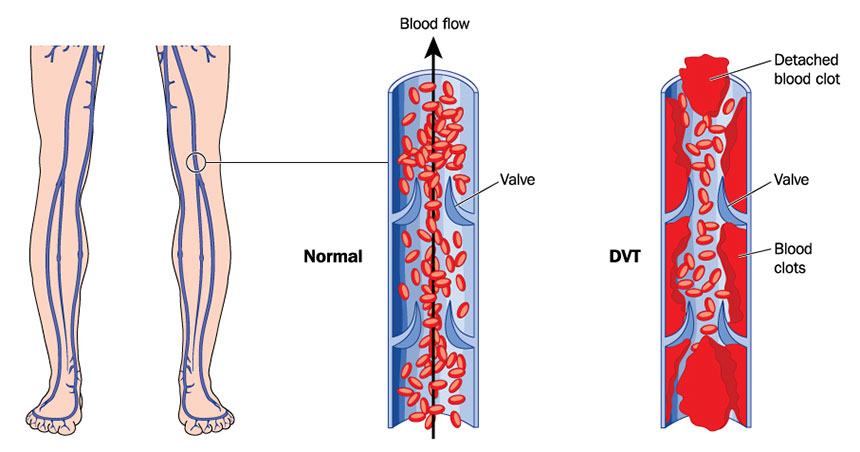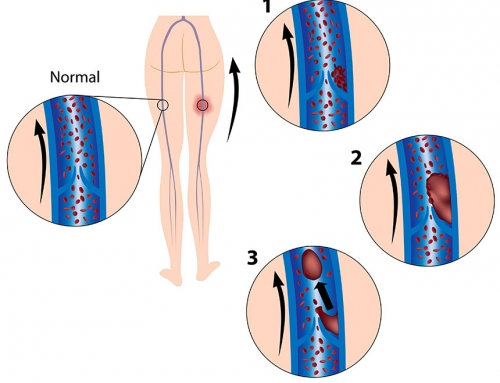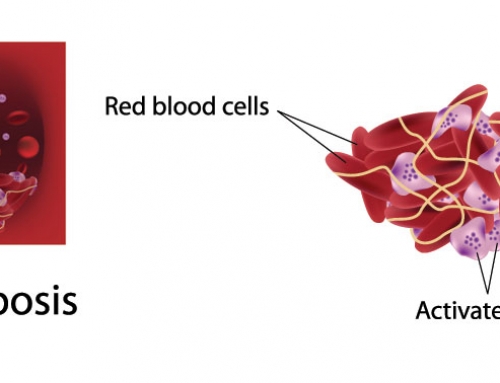What are the signs and symptoms of Thrombophilia?
People with thrombophilia are usually asymptomatic unless a blood clot forms. Blood clots slow down or block the flow of blood and oxygen to the heart and other body tissues, and they can be life threatening if left untreated.
The signs and symptoms of the blood clot can vary depending on the location of the blood clot in the body.
If a blood clot is formed in a deep vein, it is called deep vein thrombosis (DVT). There are deep veins present in the pelvis, upper and lower extremities, but legs and pelvis are more prone to developing DVT for people with thrombophilia. Signs and symptoms of DVT include pain, swelling, warmth, redness and tenderness in the affected area.
If a blood clot is formed in an artery, it is called arterial thrombosis. These blood clots can reduce the flow of blood and oxygen to other body tissues. Signs and symptoms of arterial thrombosis are skin lesions, heart attack, stroke at young age, recurrent miscarriages and pregnancy problems such as preeclampsia, smaller babies than normal or intrauterine death. It should be noted, however, that arterial thrombosis may be caused by other factors apart from thrombophilia, such as atherosclerosis and atrial fibrillation.
Blood clots formed in a blood vessel can break free and travel to other parts of the body. This embolus can travel through the bloodstream to other organs, leading to life-threatening conditions.
If the blood clot is in the brain, it can cause a stroke. The signs and symptoms of stroke are numbness on one side of the face, weakness, confusion, slurred speech, vision problems, dizziness, headache and seizures.
If the blood clot is in the heart, it can cause a heart attack. The signs and symptoms of heart attack are chest pain that radiates down to the arm, lightheaded, sweating, difficulty breathing, nausea and vomiting.
If the blood clot is in the lungs, it can cause a pulmonary embolism. The signs and symptoms of pulmonary embolism are shortness of breath, chest or upper back pain, coughing up blood, lightheaded, fever or rapid pulse.
If the blood clot is in the abdomen, the signs and symptoms are diarrhea, vomiting and severe abdominal pain.
References:
Gatt A, Makris M. Hyperhomocysteinemia and venous thrombosis (2007). Semin Hematol. 44(2): 70-6.
McGlennen RC, Key NS (2002). Clinical and laboratory management of the prothrombin G20210A mutation. Arch Pathol Lab Med. 126(11): 1319-25.
White RH (2003). The epidemiology of venous thromboembolism. Circulation. 107(23 Suppl 1): I4-I8.
DNA In the News2017-04-06T20:04:16+00:00






